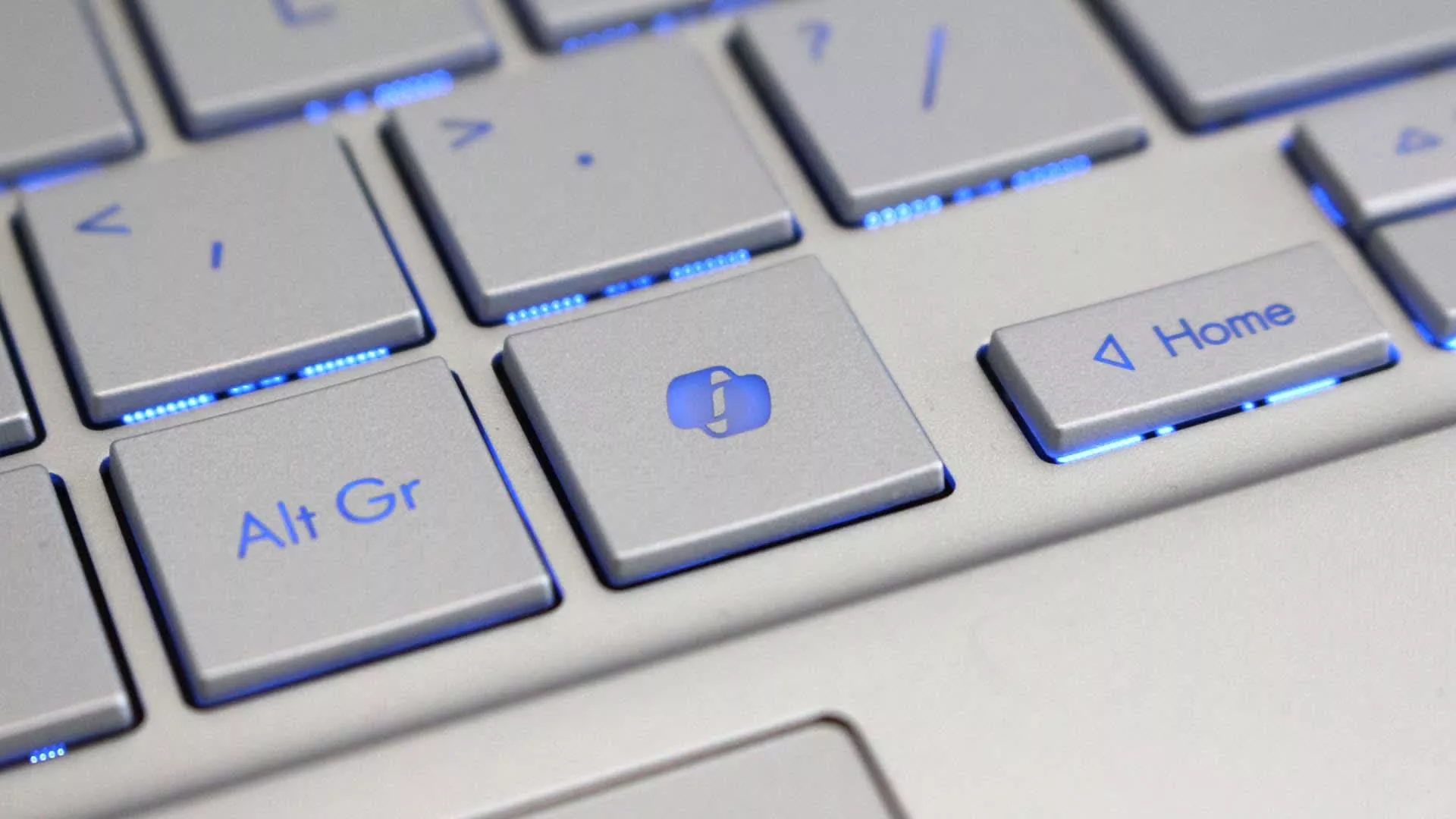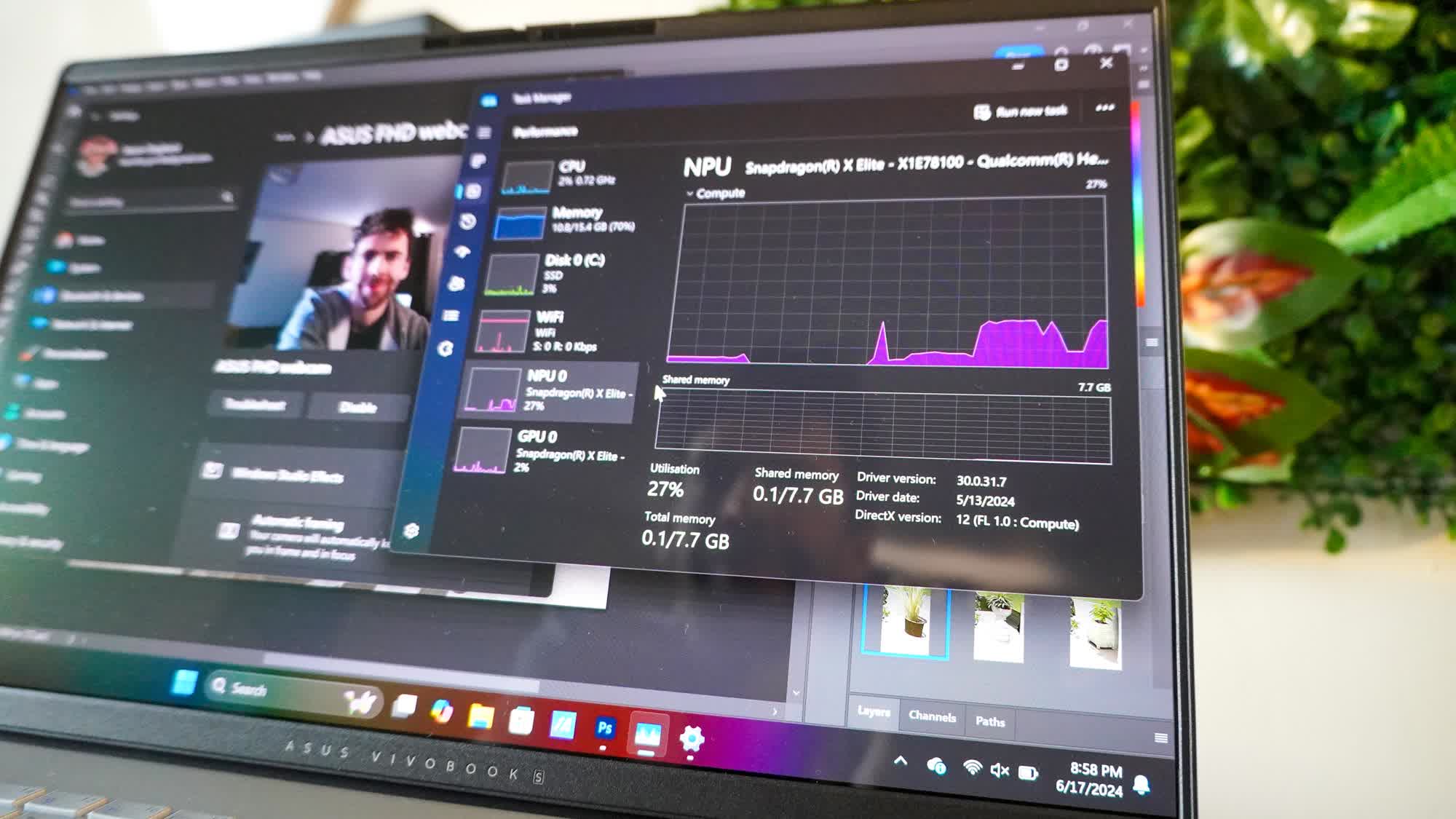The big picture: Review embargoes have lifted, painting an early picture of how the Snapdragon Elite X stacks up against x86 machines powered by AMD and Intel as well as Macs featuring Apple's own Arm-based silicon. Today the first wave of laptops powered by Qualcomm's Snapdragon X series processors have hit shore, so it's time to take a look at Microsoft's Copilot+ PC initiative up close.

Let's get the bad news out of the way first.
These first Copilot+ PCs come with some early adopter compromises, meaning they won't necessarily deliver everything we've been hoping for right out of the box. Microsoft recently postponed its controversial Recall feature following intense criticism, and it could take a while before native Arm versions of apps arrive.
Still, there's a lot to like from the get go and it starts with raw performance. In multi-core testing on the Asus VivoBook S 15 using Geekbench 6, several publications including Tom's Guide noted impressive performance that outpaced Apple's M3-powered MacBook Air.
In Cinebench 2024, the Snapdragon X Elite-equipped VivoBook turned in a single-core score of 108 and a multi-core score of 956 at Notebook Check. For comparison, a MacBook Air 15 M3 scored 142 points in the single core test, but just 589 in the multi-core run.
Tom's Hardware, one of the only publications we could find testing something besides the VivoBook – in this case, a Microsoft Surface Laptop 15 – showcased the laptop's capabilities in Handbrake.
Here, the Snapdragon X Elite smoked a ThinkPad X1 Carbon running an Intel Core i7-155H with a time of 2:39 versus 8:57 (lower is better).
Tom's uncovered decent gaming performance as well. Baldur's Gate ran fine when locked at 30 FPS, and if you're willing to lower the graphics settings, Devil May Cry 5 had no problem ticking along at 60 frames per second.
The sailing wasn't as smooth for Windows Central. Most games the crew tried to grab from the Windows Store refused to download as they were only compatible with x86 processors. Games from Steam would download, but the first three they tried – Apex Legends, Halo MCC, and Halo Infinite – errored out with a CPU incompatible message.
They lucked out with GTA V, however, which averaged around 65 FPS at 1080p. Spider-Man Remastered at low-medium settings @ 1080p was also playable, but averaged closer to 40 frames a second.
Tom's briefly touched on AI workloads with Geekbench ML, where the Surface Laptop 15 lagged behind the ThinkPad X1 Carbon with a score of 2,160 versus 2,834. Windows Central found it to take just under 10 seconds to generate images using the Photos app, and had nothing but praise for the enhanced Windows Studio Effects.
Battery life is another strong suit for Snapdragon X Elite.
Windows Central got 14 hours and 16 minutes out of their VivoBook using PCMark 10's battery life test. Matthew Moniz on YouTube squeezed 14 hours and 40 minutes out of his VivoBook test unit, and Dave2D clocked 10 hours and 46 minutes from his Asus laptop.
After a full 12-hour day of mixed usage, Tom's Guide saw their VivoBook's battery dip down to 47 percent.
Normally we'd have a wider variety of systems to include in a roundup like this but with Microsoft pulling support for Recall at the last minute, several publications were reportedly late in receiving review samples.
Still, it's an impressive start to the new era of Arm for Windows and we can't wait to see how things turn out once Microsoft gets its ducks in a row.
Roundup: Snapdragon X Elite Windows laptop first impressions, performance and battery life preview
